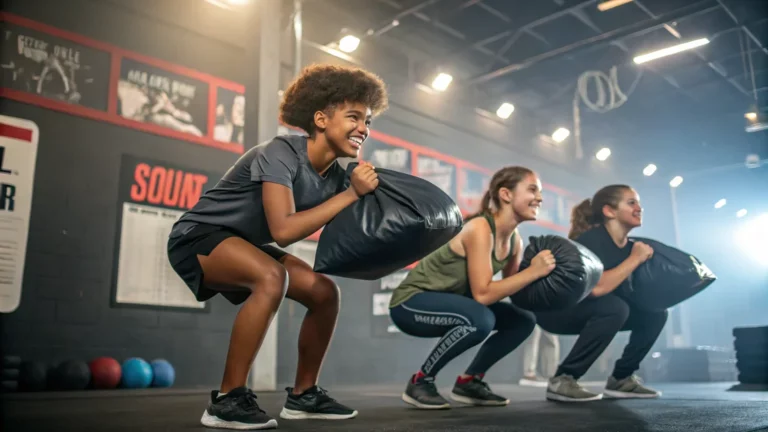Tired of the same old weightlifting routine? Yearning for a workout that challenges your entire body and translates to real-life strength?
Sandbag training, a dynamic and engaging fitness modality, might be the answer you’ve been searching for.
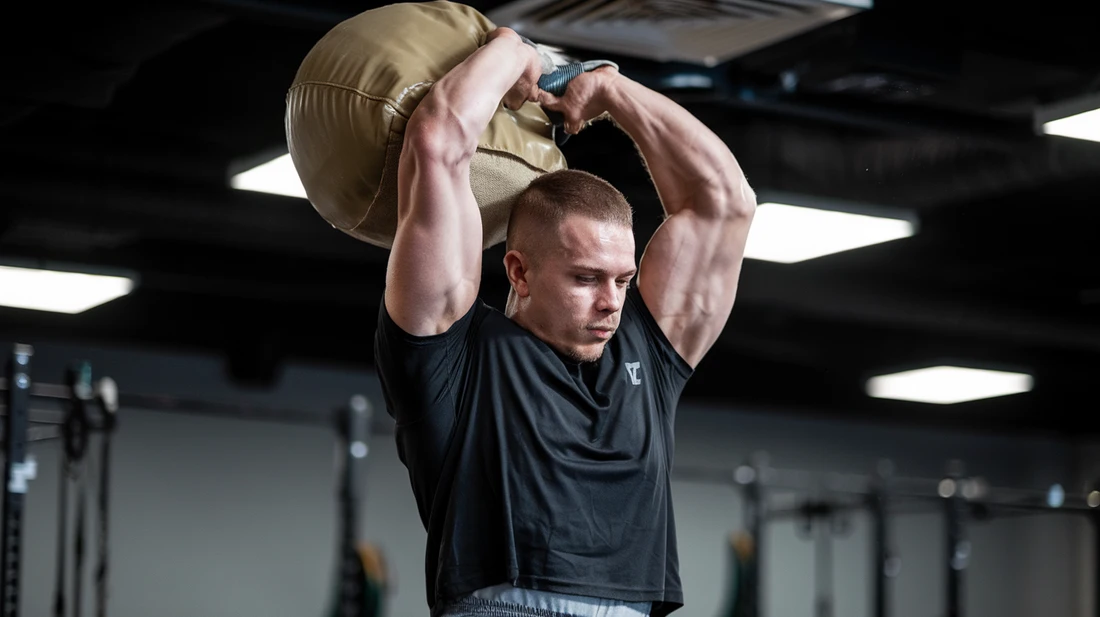
While traditional weightlifting, with its fixed barbells and dumbbells, has its place, sandbag training offers a unique and effective way to build functional strength, enhance stability, and torch calories – all with a single, versatile tool.
But how exactly does sandbag training differ from traditional weightlifting, and what makes it so beneficial?
This article explores the key differences between these two approaches to strength training, uncovering the unique advantages of embracing instability and functional movement patterns.
Get ready to discover how sandbag training, often championed as the ultimate home gym solution, can revolutionize your fitness journey.
Defining Sandbag and Traditional Weightlifting
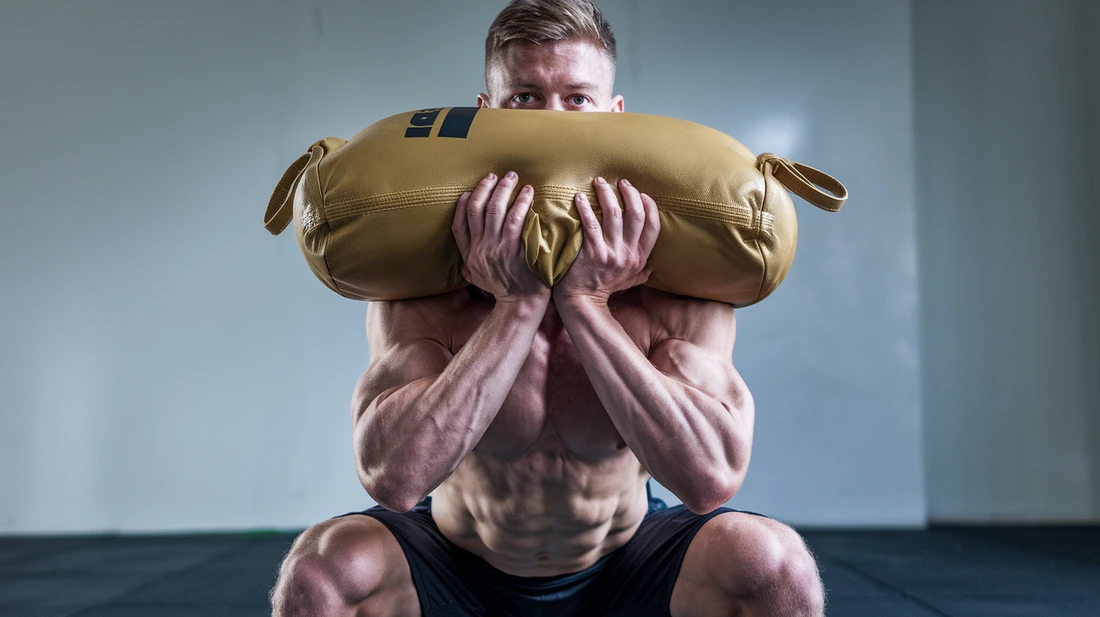
Sandbag Training
Sandbag training is a dynamic form of strength and conditioning that utilizes unstable, irregular weights.
Unlike traditional weights, the weight inside a sandbag constantly shifts and changes during exercise, forcing your muscles to adapt and work harder.
- This constant adjustment engages more muscles, particularly stabilizer muscles responsible for balance and control, leading to functional strength that is applicable to everyday activities and athletic performance.
- Sandbag exercises often mimic real-life movements, such as lifting awkwardly shaped objects or carrying heavy groceries.
- This makes sandbag training particularly effective for developing core strength, as your core muscles must work constantly to stabilize your body as you lift and move the sandbag.
- The sources highlight the versatility of sandbags as a home gym tool. Sandbags are relatively inexpensive, require minimal space, and can be used for a wide range of exercises targeting multiple muscle groups.
Traditional Weightlifting
Traditional weightlifting utilizes fixed weights like dumbbells and barbells. These weights provide a stable and predictable resistance, allowing for more targeted muscle isolation.
- Traditional weightlifting exercises often focus on isolating and strengthening specific muscle groups, such as bicep curls for biceps or bench presses for the chest.
- While effective for building muscle mass and strength, traditional weightlifting may not always translate as directly to functional strength needed for everyday activities.
The sources offer a table summarizing the key differences between sandbag training and traditional weightlifting:
| Feature | Sandbag Training | Traditional Weightlifting |
| Equipment Versatility | Highly versatile, one tool for many exercises | Requires various machines or free weights |
| Muscle Activation | Engages stabilizer muscles due to instability | Primarily targets primary muscle groups |
| Functional Strength | Mimics real-world movements, improving functional fitness | More focused on isolated muscle groups |
| Injury Risk | Lower risk of injury due to dynamic nature | Higher risk of injury if proper form is not maintained |
| Cost-Effectiveness | Relatively low cost, often requiring minimal equipment | Can be expensive, especially with gym memberships and equipment |
Key Differences Between Sandbag Training and Traditional Weightlifting
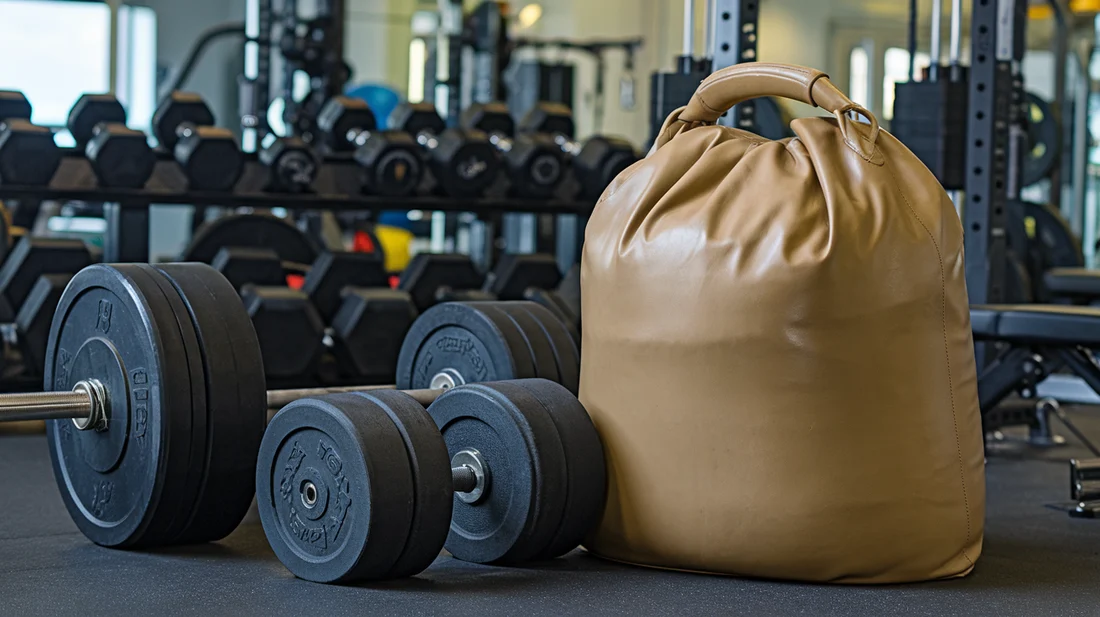
Instability and Muscle Engagement
The constantly shifting weight of a sandbag engages more muscles than traditional weights, especially stabilizer muscles.
Unlike the fixed weight of dumbbells or barbells, sandbags require your muscles to work harder to control and stabilize the weight throughout the exercise.
This increased muscle activation leads to faster strength and muscle growth.
For example, performing a sandbag squat requires your core muscles to work overtime to maintain balance and stability as the sandbag shifts, enhancing core strength and overall functional fitness.
Functional Strength and Real-World Application
Sandbag exercises mimic movements found in everyday life, building functional strength that translates to real-world activities.
For example, lifting and carrying a sandbag simulates the action of carrying heavy groceries, improving your ability to perform this task with ease and reducing the risk of injury.
The source emphasizes that sandbag training’s focus on functional movements makes it more practical for everyday life than traditional weightlifting.
Injury Risk
Sandbag training may carry a lower risk of injury compared to traditional weightlifting.
The dynamic nature of sandbag exercises and the use of lighter weights can reduce stress on joints and minimize the risk of strains or sprains.
However, maintaining proper form remains crucial to avoid injuries.
Traditional weightlifting, particularly when using heavy weights and improper technique, can increase the risk of injury.
Cost and Equipment
Sandbag training is a cost-effective way to achieve a full-body workout.
It requires minimal equipment, often just a sandbag. In contrast, traditional weightlifting often necessitates a gym membership or a variety of weights, leading to higher costs.
The blog post emphasizes the sandbag as the only tool needed for a comprehensive home workout.
Benefits of Sandbag Training and Traditional Weightlifting
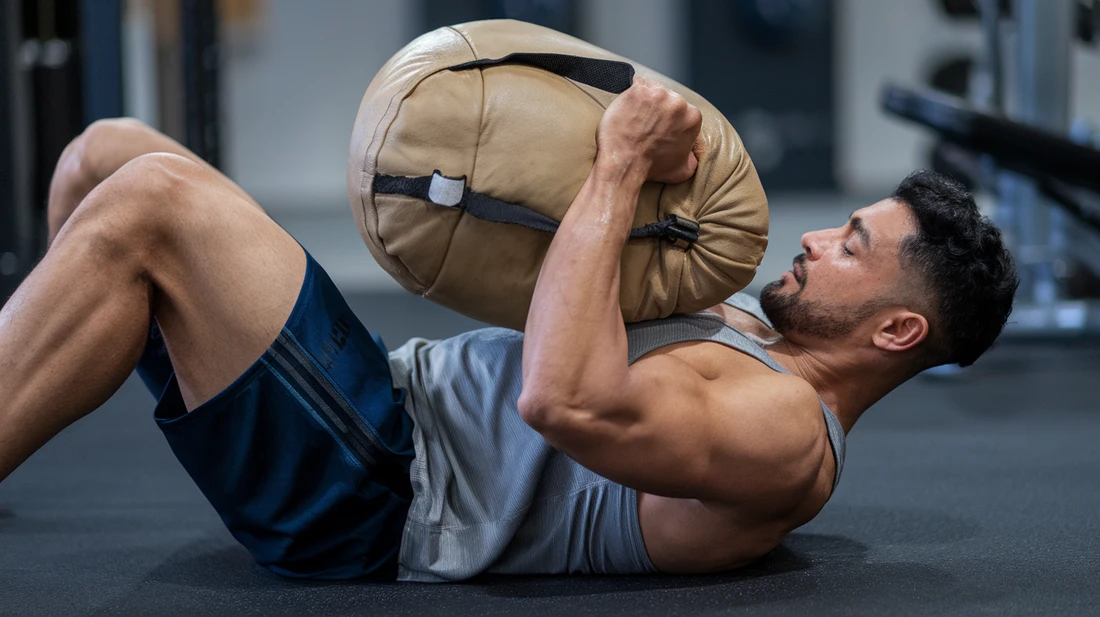
Sandbag Training Benefits
The “Unique Benefits of Sandbag Training” section highlights several key advantages:
- Functional Strength: Sandbag training develops practical strength that translates to everyday activities and athletic performance because the exercises mimic real-life movements. For example, sandbag squats and lunges can improve strength and stability for activities like lifting heavy objects or climbing stairs.
- Core Powerhouse: The unstable nature of sandbags forces your core muscles to work harder to stabilize your body, leading to improved stability and balance. This enhanced core strength can benefit athletic performance and reduce the risk of lower back pain.
- Iron Grip: Grappling with sandbags strengthens your grip, making everyday tasks easier and enhancing athletic performance in activities like rock climbing or martial arts. The sources recommend using sandbag gloves to protect your hands from blisters and calluses, especially during heavy lifting.
- Cardiovascular Boost: Intense sandbag workouts, like those incorporating sprints or burpees, elevate your heart rate and burn calories, improving cardiovascular health.
- Budget-Friendly Fitness: Sandbags are a cost-effective alternative to expensive gym memberships and equipment. The sources emphasize that a sandbag can be the only tool needed for a comprehensive home workout.
- Versatile and Portable: Sandbags are compact and easy to transport, making them ideal for home workouts or outdoor training.
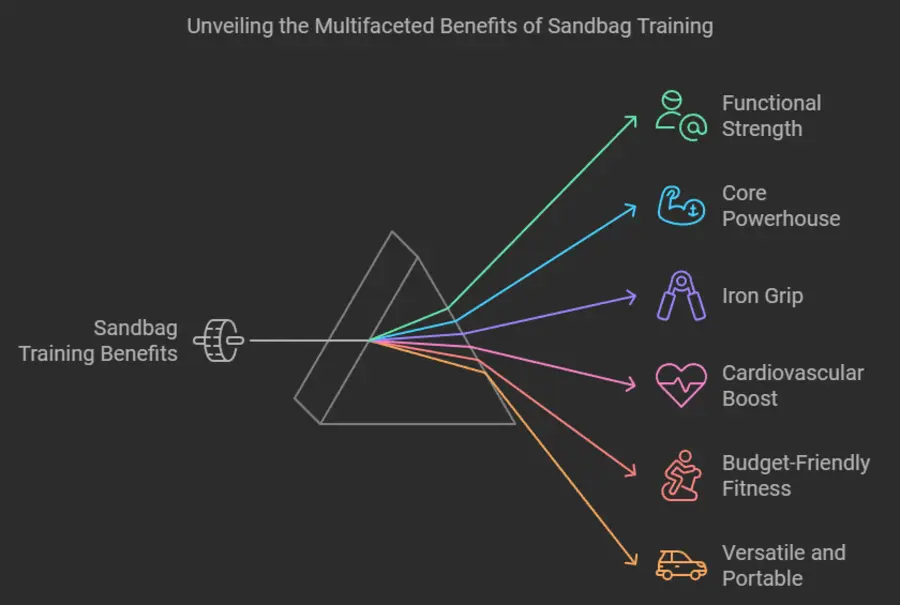
Traditional Weightlifting Benefits
While the sources primarily focus on the benefits of sandbag training, they acknowledge that traditional weightlifting offers its own set of advantages.
These include:
- Targeted Muscle Hypertrophy: Traditional weightlifting, with its use of fixed weights and isolated movements, is highly effective for building muscle mass in specific areas. For example, bicep curls can effectively isolate and build the biceps muscle.
- Strength Gains in Specific Movement Patterns: Traditional weightlifting can be beneficial for developing strength in specific movement patterns, such as the bench press for pushing strength or the deadlift for pulling strength. This type of training can be particularly useful for athletes who need to improve strength in sport-specific movements.
Choosing the Best Training Modality for You
When choosing between sandbag training and traditional weightlifting, consider your fitness goals, experience level, available equipment, and personal preferences.
Fitness Goals
- Functional Strength for Everyday Life: If you’re looking to improve your ability to perform everyday activities with ease and reduce your risk of injury, sandbag training might be a great choice. Sandbag exercises mimic real-life movements, such as lifting heavy objects, carrying groceries, or navigating uneven terrain.
- Core Strength and Stability: The unstable nature of sandbags forces your core muscles to work overtime, making sandbag training an excellent option for developing a strong and stable core.
- Building Muscle Mass: If your primary goal is to build significant muscle mass and increase strength in specific muscle groups, traditional weightlifting, with its use of fixed weights and targeted movements, might be more effective.
- Athletic Performance: Both sandbag training and traditional weightlifting can benefit athletic performance. Sandbag training enhances functional strength and core stability, while traditional weightlifting builds muscle power and strength in specific movement patterns. The best choice depends on the specific demands of your sport.
Experience Level
- Beginners: Sandbag training can be a good starting point for beginners due to its dynamic nature and use of lighter weights, which can reduce stress on joints and minimize the risk of injuries. Starting with lighter sandbags and gradually increasing the weight as you gain strength is recommended.
- Experienced Lifters: Experienced lifters can benefit from both sandbag training and traditional weightlifting. Sandbag training can provide a new challenge and introduce functional movements into a well-established routine. Traditional weightlifting can continue to promote muscle hypertrophy and strength gains.
Available Equipment
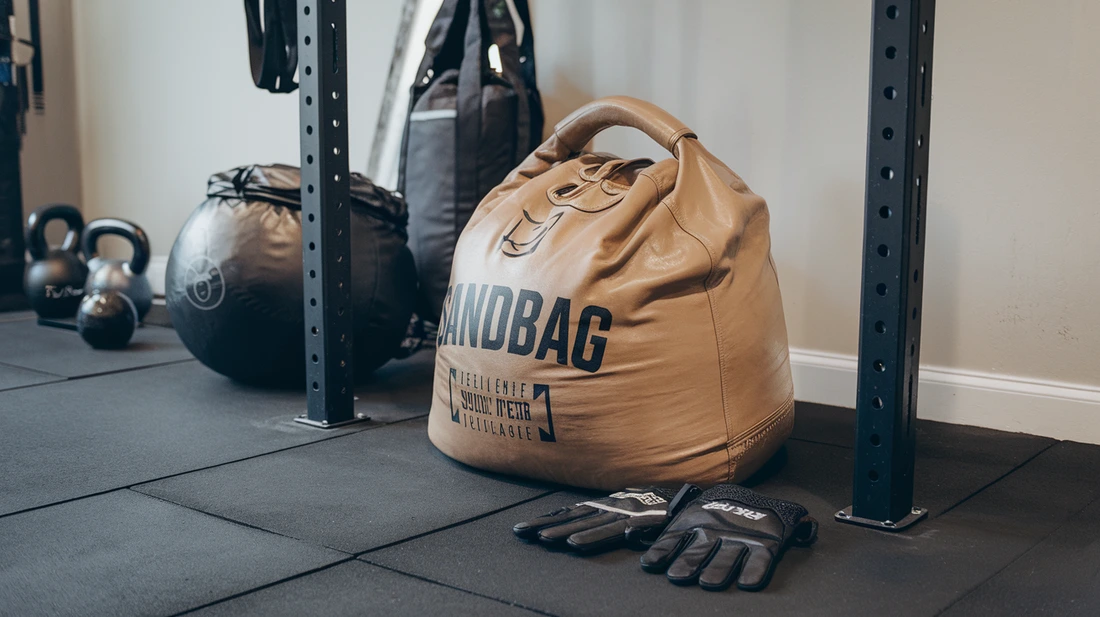
- Sandbag Training: Sandbag training requires minimal equipment—just a sandbag and possibly sandbag gloves. This makes it a very accessible option for home workouts or training outdoors.
- Traditional Weightlifting: Traditional weightlifting typically requires a wider range of equipment, including dumbbells, barbells, weight plates, and a weight bench. Access to a gym or a significant investment in home gym equipment is often necessary.
Personal Preferences
- Enjoyment and Engagement: Choose the modality that you find more enjoyable and engaging. Consistency is crucial for success, and you’re more likely to stick with a training program that you enjoy.
- Training Style: Sandbag training offers a more dynamic and unpredictable workout experience, while traditional weightlifting provides a more structured and controlled environment. Choose the training style that aligns with your preferences.
Incorporating Both Modalities
For a well-rounded fitness program, you can incorporate both sandbag training and traditional weightlifting.
Option 1: Alternating Training Blocks
- Focus on sandbag training for a specific period, such as a month, to build functional strength and core stability.
- Then transition to a block of traditional weightlifting to focus on muscle hypertrophy and strength gains in specific movement patterns.
Option 2: Integrating Exercises Within Workouts
- Include a mix of sandbag and traditional weightlifting exercises within the same workout. For example, you could start with compound movements like sandbag squats and lunges, followed by isolation exercises like dumbbell bicep curls and triceps extensions.
- Use sandbag exercises as accessory movements to supplement traditional weightlifting. For instance, you could incorporate sandbag carries or rotational movements after your main lifts to improve grip strength and core stability.
Experiment with different combinations to find what works best for you.
Remember to prioritize proper form and listen to your body to avoid injury and maximize results.
You should also consult with a qualified fitness professional to develop a personalized program tailored to your specific needs and goals.
What Our Users Say
Testimonial focusing on functional strength: “Since I started sandbag training, I’ve noticed a huge difference in my everyday strength. Carrying groceries, playing with my kids, even yard work – it all feels easier! ” – Mahin
●Testimonial emphasizing core strength: “I used to struggle with back pain, but after incorporating sandbag exercises into my routine, my core strength has dramatically improved, and my back pain is gone! I feel so much more stable and balanced.” – Woon
●Testimonial highlighting weight loss: “Sandbag training has helped me torch calories and lose weight like never before. The workouts are challenging and fun, and I’m seeing amazing results!” – Bala
Disclaimer: The testimonials provided above are fictional and used for illustrative purposes only. While the results described are hypothetical, they are based on the principles and information presented in this blog post.
Conclusion – Embracing the Power of Sandbag Training
Sandbag training and traditional weightlifting offer distinct approaches to strength and conditioning, each with unique benefits.
Traditional weightlifting excels at building targeted muscle mass and strength in specific movement patterns, making it a valuable tool for those seeking hypertrophy and strength gains in isolated movements.
However, sandbag training stands out as a highly effective and versatile option, especially for home gyms, due to its focus on functional strength, core engagement, and accessibility.
Sandbag training’s unique advantages stem from the unstable nature of the sandbag, which constantly shifts and challenges your body in new ways.
This dynamic characteristic forces your muscles to work harder to stabilize and control the weight, leading to enhanced muscle activation, improved core stability, and greater functional strength.
Unlike traditional weightlifting, which often relies on fixed weights and isolated movements, sandbag training mimics real-life movements, making it highly practical for everyday activities and athletic performance.
The sources highlight several compelling benefits of sandbag training:
- Functional Strength: Develop practical strength that seamlessly translates to everyday activities and athletic endeavors.
- Core Powerhouse: Strengthen your core muscles and enhance stability, crucial for injury prevention and overall athleticism.
- Iron Grip: Improve grip strength, beneficial for various tasks and athletic pursuits. The sources recommend using sandbag gloves for hand protection, especially during heavy lifting.
- Cardiovascular Boost: Elevate your heart rate and burn calories with intense sandbag workouts, contributing to improved cardiovascular health.
- Budget-Friendly Fitness: Enjoy a cost-effective workout solution that eliminates the need for expensive gym memberships or a wide array of equipment.
- Versatile and Portable: Train anywhere with the compact and easy-to-transport nature of sandbags, ideal for home workouts or outdoor training.
Sandbag training offers a comprehensive and engaging fitness experience that can transform your workouts and help you achieve your fitness goals.
The sources provide various workout routines tailored for all fitness levels, making it easy to get started and progress on your fitness journey.
Embrace the power of sandbag training and experience its unique benefits firsthand.
Start by exploring the workout routines outlined in one of the sources, select a weight appropriate for your fitness level, and prioritize proper form throughout each exercise.
Consistency and dedication will unlock your full potential and pave the way for a healthier, stronger you.
Are you ready to ditch the dumbbells and unleash the transformative power of sandbag training?
References
Effects of 12-Week Progressive Sandbag Exercise Training on Glycemic Control and Muscle Strength in Patients: National Institutes of Health (NIH) (.gov)

